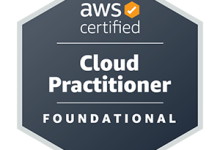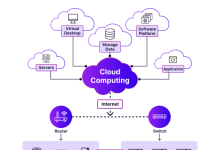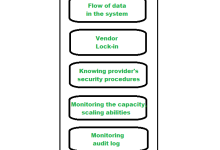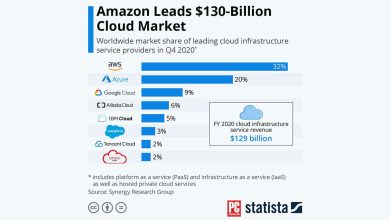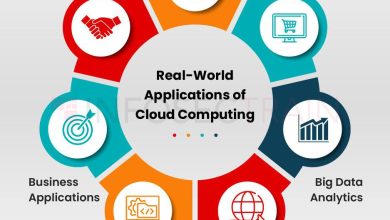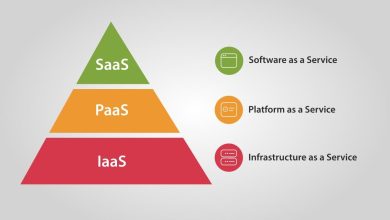cloud based computing services
Ads
Introduction
Cloud based computing services have revolutionized the way businesses operate in today’s digital world. By leveraging the power of the cloud, companies can access a wide range of resources and capabilities that were previously only available to large corporations with extensive IT infrastructure. In this article, we will explore the benefits and challenges of using cloud based computing services, as well as provide a comprehensive overview of how businesses can harness this technology to drive innovation and growth.
Strengths of Cloud Based Computing Services
One of the key strengths of cloud based computing services is scalability. Companies can easily adjust their computing resources to meet changing demands without incurring significant costs or downtime. This flexibility allows businesses to quickly respond to market changes and scale their operations up or down as needed. Additionally, cloud based services offer enhanced security measures to protect sensitive data and ensure compliance with industry regulations.
Scalability
Cloud computing offers businesses the ability to scale infrastructure up or down based on real-time requirements. This flexibility enables companies to avoid over-provisioning resources and paying for unused capacity. With cloud based computing services, businesses can seamlessly adjust their IT resources to match demand spikes and optimize performance.
Enhanced Security
Cloud providers implement robust security measures to protect data from unauthorized access or cyber threats. By leveraging the expertise and resources of cloud vendors, businesses can ensure the confidentiality, integrity, and availability of their sensitive information. Encryption, access controls, and monitoring mechanisms are some of the security features offered by cloud based computing services.
Cost Savings
Using cloud services can lead to significant cost savings for businesses. By outsourcing infrastructure management to cloud providers, companies can reduce capital expenditure on hardware and software. Additionally, cloud based computing services follow a pay-as-you-go model, allowing organizations to pay only for the resources they use. This cost-effective approach can result in lower IT expenses and improved financial efficiency.
Collaboration and Productivity
Cloud computing promotes collaboration and productivity by enabling employees to access data and applications from anywhere, at any time. With cloud based services, teams can work together seamlessly on projects, share files, and communicate effectively. This flexibility enhances workflow efficiency and empowers employees to work more productively, regardless of their location.
Innovation and Agility
Cloud based computing services empower businesses to innovate and deploy new technologies quickly. By leveraging the latest cloud solutions, companies can experiment with emerging technologies, such as artificial intelligence and machine learning, without heavy upfront investment. This agility allows organizations to stay ahead of the curve and drive competitive advantage through continuous innovation.
Global Reach
Cloud based computing services enable businesses to reach a global audience and expand their operations beyond geographical boundaries. With cloud infrastructure, companies can easily deploy applications and services in multiple regions, accommodating diverse customer needs. This global reach enhances market penetration and supports international growth strategies, opening new opportunities for business expansion.
Reliability and Redundancy
Cloud providers offer high levels of reliability and redundancy to ensure continuous service availability for customers. By leveraging multiple data centers and backup systems, cloud based computing services can deliver uninterrupted performance and disaster recovery capabilities. This resilience safeguards businesses against downtime and data loss, providing peace of mind for mission-critical operations.
Weaknesses of Cloud Based Computing Services
While cloud based computing services offer numerous advantages, there are also some challenges and potential drawbacks that businesses need to consider. Understanding the weaknesses of cloud technology can help organizations mitigate risks and make informed decisions about their IT strategy. In this section, we will explore some of the common weaknesses associated with cloud based computing services.
Security Concerns
One of the primary concerns surrounding cloud computing is data security. Storing sensitive information on remote servers managed by third-party providers introduces potential risks of unauthorized access or data breaches. Businesses need to implement robust security measures and compliance protocols to protect their data privacy and maintain regulatory compliance.
Dependency on Internet Connectivity
Cloud based services rely on internet connectivity for data access and communication. In case of network outages or disruptions, businesses may experience downtime or limited access to critical resources. Organizations need to have contingency plans in place to address connectivity issues and ensure consistent performance of cloud applications during unforeseen events.
Data Privacy and Compliance
Cloud providers store and process data on behalf of their customers, raising concerns about data privacy and compliance. Companies need to verify that cloud vendors adhere to stringent data protection regulations and industry standards to maintain the confidentiality and integrity of their information. Failure to comply with data privacy laws can result in legal implications and reputational damage.
Vendor Lock-In
Adopting cloud based computing services may lead to vendor lock-in, where companies become dependent on a particular cloud provider for their infrastructure and applications. Switching between cloud platforms can be complex and costly, limiting businesses’ flexibility and ability to optimize their IT ecosystem. Organizations should carefully evaluate vendor contracts and migration strategies to avoid vendor lock-in scenarios.
Performance and Reliability
While cloud based services offer high scalability and redundancy, performance and reliability issues can still occur. Businesses may encounter latency or downtime due to shared resources, network congestion, or hardware failures. Cloud providers need to proactively monitor and manage their infrastructure to ensure consistent performance and availability for their customers.
Cost Management
Despite offering cost savings in many cases, cloud based computing services can also lead to unexpected expenses if not managed efficiently. Organizations need to monitor their cloud usage and optimize resource utilization to avoid overspending on unnecessary services or features. Implementing cost control measures and periodic reviews of cloud spending can help companies maximize the value of their investment in cloud technology.
Data Migration and Integration
Moving existing data and applications to the cloud can be a complex process that requires careful planning and execution. Data migration challenges, such as compatibility issues, data loss, and downtime, can impact business continuity and productivity. Integrating cloud services with on-premises systems and legacy applications also presents integration hurdles that need to be addressed systematically to ensure smooth operations.
Table: Overview of Cloud Based Computing Services
| Feature | Description |
|---|---|
| Scalability | Ability to adjust computing resources based on demand. |
| Security | Robust measures to protect data and ensure compliance. |
| Cost Efficiency | Pay-as-you-go model for cost-effective resource utilization. |
| Collaboration | Enhanced teamwork and productivity through cloud access. |
| Innovation | Quick deployment of new technologies for competitive edge. |
| Global Reach | Expansion opportunities into diverse markets worldwide. |
| Reliability | High uptime and disaster recovery capabilities for continuity. |
FAQs About Cloud Based Computing Services
1. What is cloud based computing?
Cloud based computing refers to the delivery of computing services over the internet, including storage, processing power, and applications, from remote data centers.
2. How secure is cloud computing?
Cloud vendors implement robust security measures to protect customer data, but businesses need to adopt security best practices and compliance measures to ensure data privacy.
3. What are the cost implications of cloud services?
Cloud based computing follows a pay-as-you-go model, allowing organizations to optimize resource usage and control costs effectively based on actual demand.
4. How does cloud computing support global operations?
Cloud infrastructure enables businesses to host applications and services in multiple regions, ensuring low latency and high availability for customers worldwide.
5. What challenges are associated with cloud migration?
Data migration, integration with existing systems, and ensuring data security are common challenges that businesses face when transitioning to cloud based services.
6. How can companies mitigate risks in the cloud?
Implementing encryption, access controls, and monitoring mechanisms can help companies enhance data security and comply with regulatory requirements in the cloud.
7. What are the key considerations for selecting a cloud provider?
Performance, security, compliance, pricing, and scalability are critical factors that businesses should evaluate when choosing a cloud vendor for their IT needs.
Conclusion
In conclusion, cloud based computing services offer businesses a powerful platform to drive innovation, improve productivity, and scale operations effectively. While there are challenges and risks associated with cloud technology, the benefits far outweigh the drawbacks for organizations willing to embrace digital transformation. By leveraging the strengths of cloud computing and addressing potential weaknesses through strategic planning, businesses can unlock new opportunities for growth and success in the digital age. Take the first step towards harnessing the power of the cloud and revolutionize your business today.
Disclaimer
The information provided in this article is for educational and informational purposes only. Readers are advised to conduct their own research and consult with IT professionals before implementing any cloud based computing solutions. The author and publisher assume no liability for any actions taken based on the content of this article.
